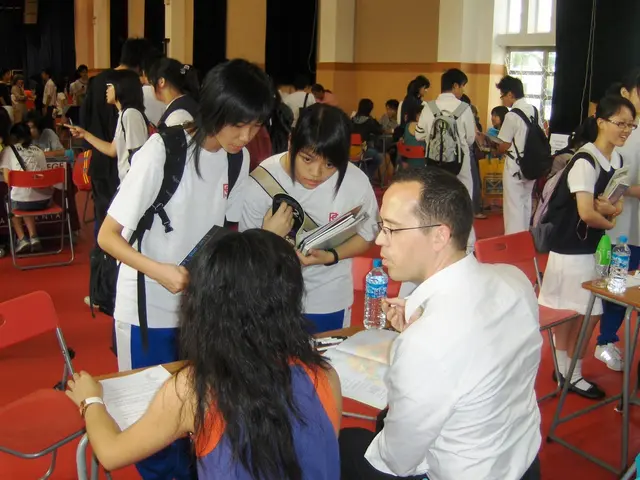Ranks of Asian universities climb in global leadership for sustainability
In the pursuit of achieving the Sustainable Development Goals (SDGs), Asian universities are playing an increasingly significant role, particularly in the realm of sustainable finance. This multifaceted role involves research, innovation, leadership, partnerships, and education.
Key Strategies
Asian universities are driving research and innovation that aligns with sustainable development. By focusing on sustainable finance, they help develop new financial instruments and strategies that can support SDG implementation. This includes integrating finance with policy and investment strategies to address funding shortfalls.
The region has seen a significant increase in sustainability leadership, with Asian institutions rising in global rankings. The Times Higher Education Impact Rankings 2025 highlight a substantial growth in Asian universities' contributions to sustainability, with 22 of the top 50 universities now from the region.
Universities are engaging in partnerships and collaborations to promote sustainable development. For example, Chulalongkorn University is actively involved in programs like the AUN Summer Camps, which foster global citizenship and sustainable development across ASEAN. These partnerships help mobilize resources and expertise towards achieving the SDGs.
Asian universities are incorporating SDG-focused education into their curricula, equipping students with the skills needed to address global challenges. This educational approach ensures that future leaders are well-prepared to drive sustainable development and finance initiatives.
Challenges and Opportunities
Despite these efforts, challenges persist, particularly in terms of systemic integration and resource constraints. Many underfunded institutions face technological and financial barriers, limiting their ability to fully engage in global sustainability initiatives. However, the rising demand for SDG-related education and the growing presence of Asian universities in sustainability rankings indicate a strong potential for continued growth and impact in bridging the SDG financing gap.
Future Directions
Looking forward, Asian universities will likely continue to strengthen their roles in sustainable finance and education. Through further collaboration, research, and innovation, they can help address the financing gaps and ensure that more SDG targets are met by 2030.
Research centres at universities such as Universitas Airlangga, Universitas Indonesia, Institut Teknologi Bandung, and Universitas Gadjah Mada have contributed to policy frameworks on carbon pricing, renewable energy investment, climate finance governance, and child protection through Islamic social finance.
In Indonesia, universities are collaborating with development banks, regulators, and ministries to build capacity and provide evidence-based recommendations for sustainable finance. Universities in the region are expanding need-based scholarships, integrating community engagement into curricula, and promoting open-access research to extend knowledge beyond campus boundaries.
The inclusion of universities in the Fourth International Conference on Financing for Development (FFD4) reflects a broader recognition that higher education institutions are not just passive recipients of funding but active contributors to financial innovation. Universities in Asia are engaging in green bonds, sustainability-linked loans, and blended finance models.
The growing presence of Asian universities in sustainability rankings is a shift toward embedding sustainable finance within academic and institutional priorities. Long-term success in sustainable finance depends on strategic alignment rather than short-term projects or publicity-driven initiatives.
[1] Based on UN Sustainable Development Report 2024 [2] Based on data from the Indonesian SDGs Center Network (ISCN) [3] Based on data from the Center for Advance Resilience and Inclusive Studies (CARE) at Universitas Airlangga [4] Based on data from the ASEAN University Network (AUN)
- Asian universities are propelling research and innovation focusing on renewable energy, carbon management, climate finance, and Islamic social finance to support the Sustainable Development Goals (SDGs) implementation.
- Universities in Asia are leveraging sustainability leadership, as seen in their rise in global rankings like the Times Higher Education Impact Rankings 2025, to contribute significantly to sustainability.
- Universities, in partnership with development banks, regulators, and ministries, are providing evidence-based recommendations for sustainable finance, promoting education on social impact, and engaging in financial models like green bonds and blended finance.
- Educational institutions in Asia are focusing on sustainability-oriented education-and-self-development, collaborations, and community engagement to equip future leaders and address global challenges.
- The growing presence of Asian universities in sustainability rankings and their active participation in conferences like FFD4 signals a commitment to driving the energy transition towards a more sustainable future, emphasizing the importance of long-term strategic alignment.




